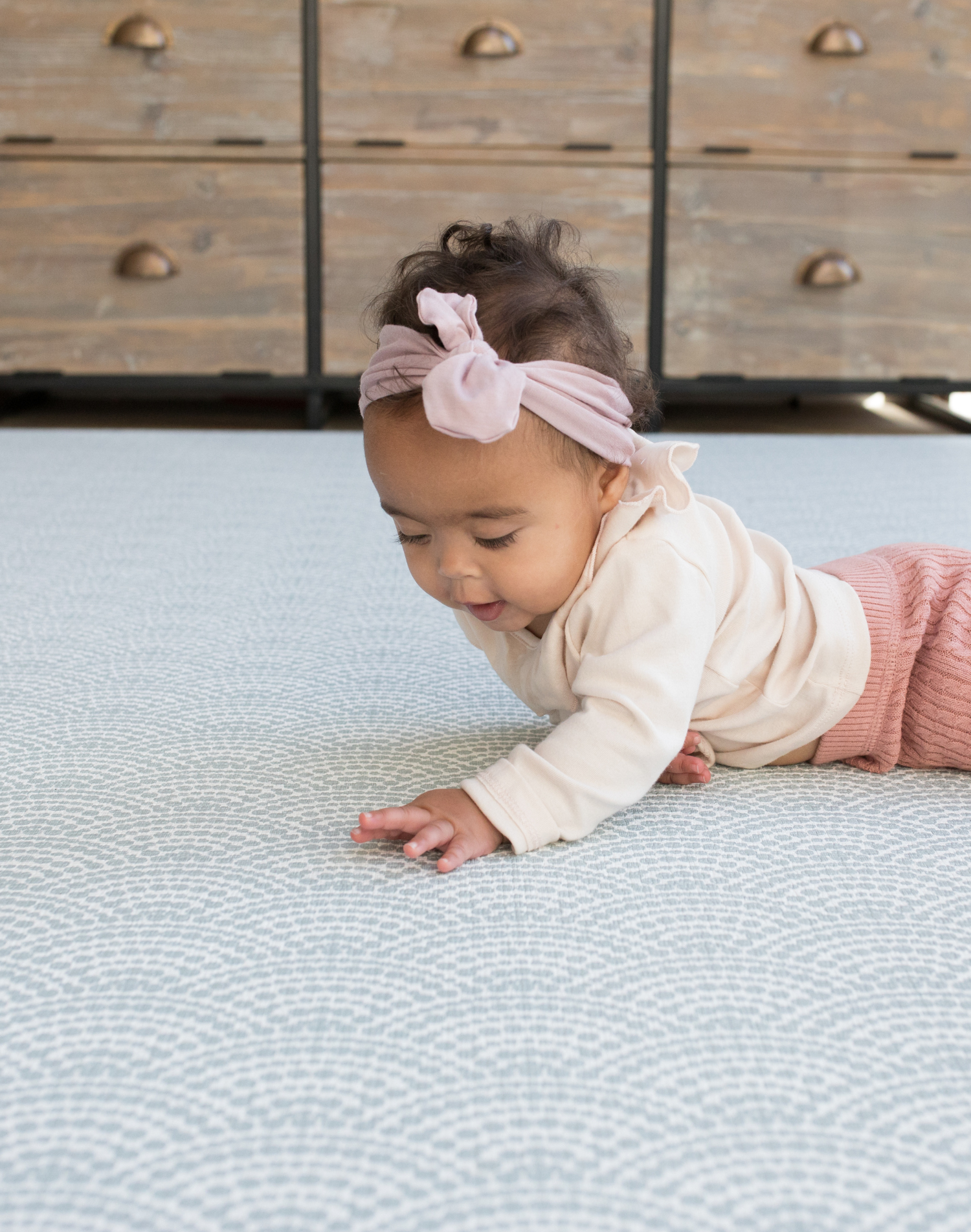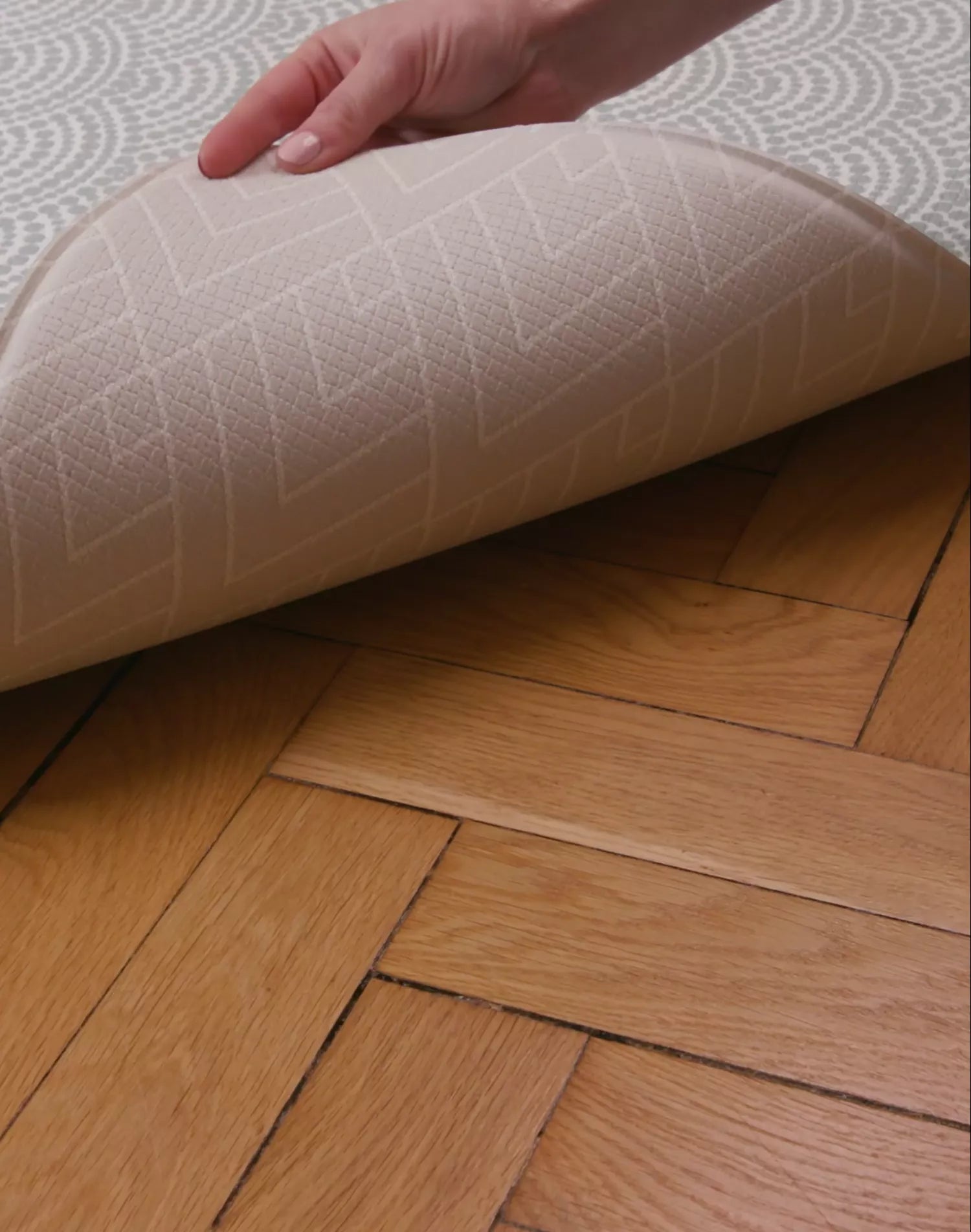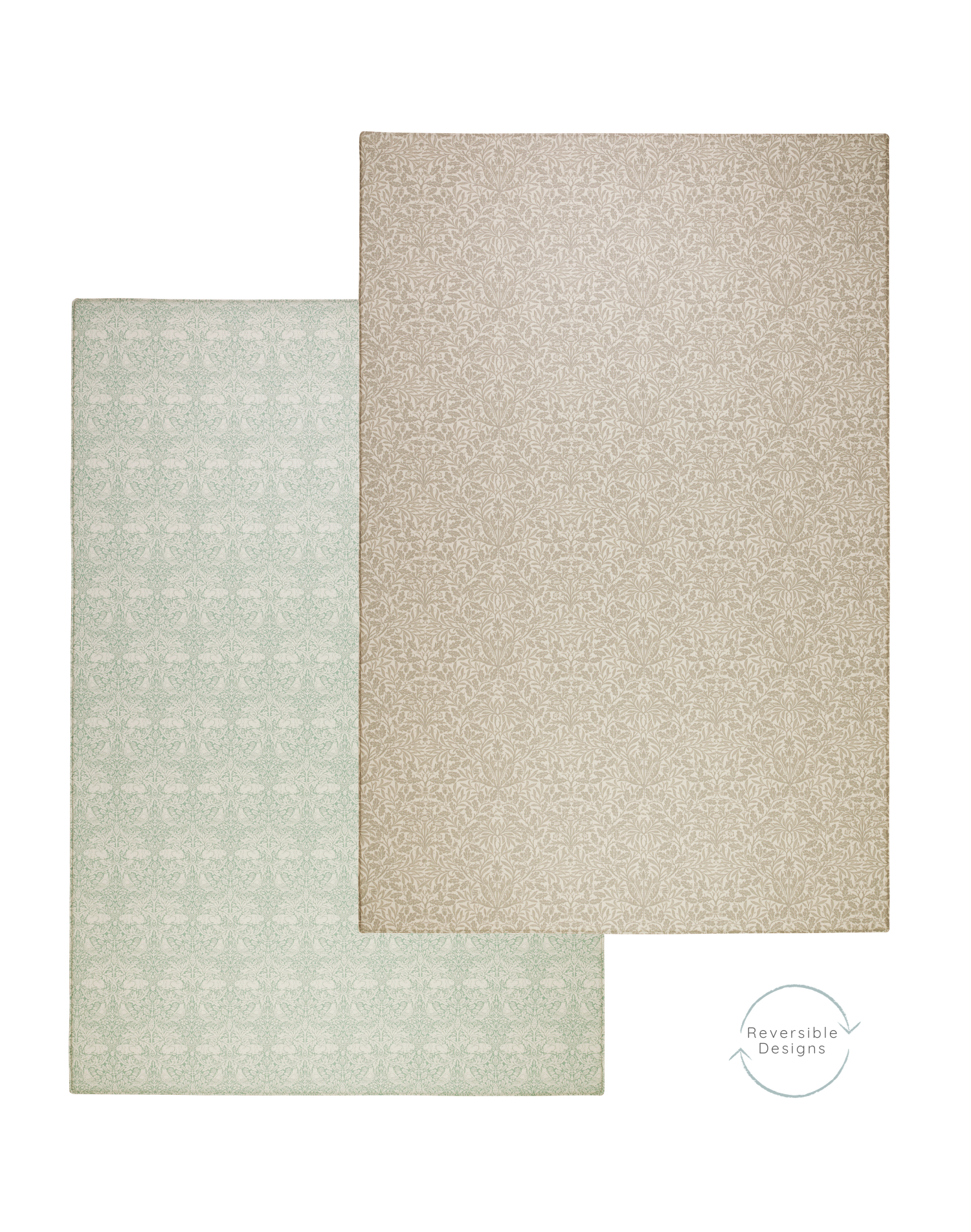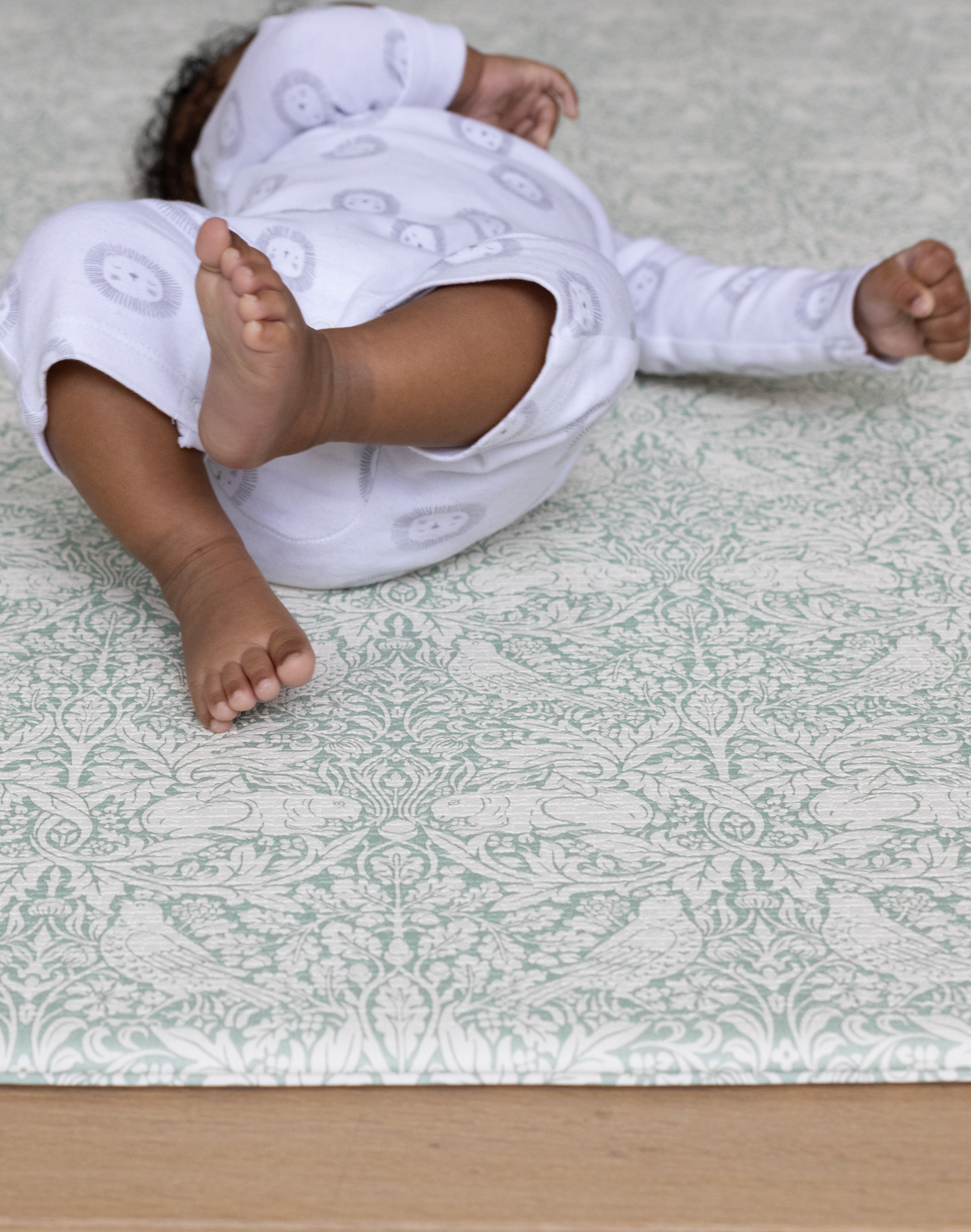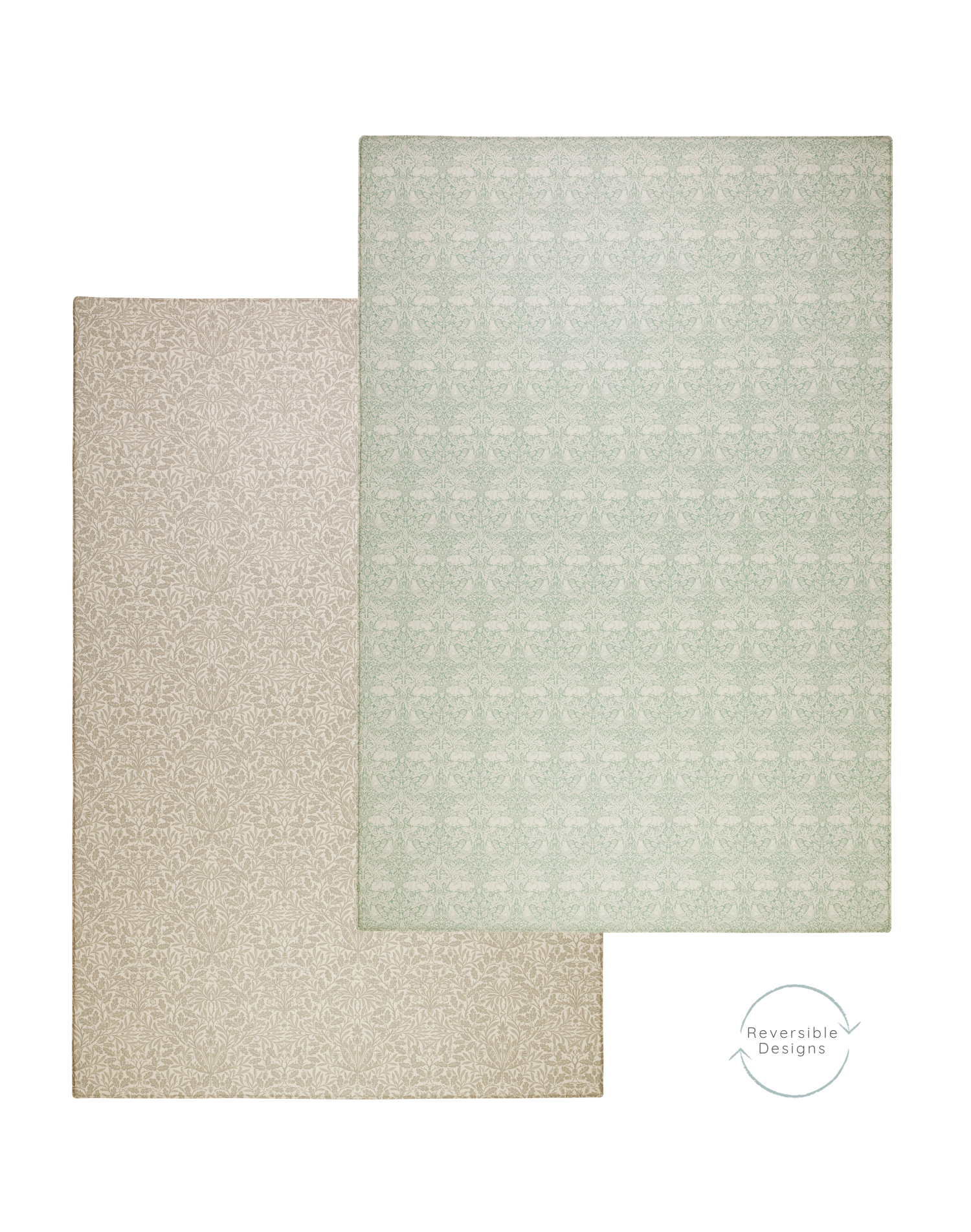This blog follows up from my recent social media post on how Totter + Tumble playmats are in-part inspired my Montessori. You see, the designs are not only chosen to be subtle and stylish in your interior, but because they are also subtle within play.
Just like so many parents comment to me that they find the garish or bold playmat alternatives distracting, sometimes to the point of painful, children also can feel the overwhelm and over-stimulation too.
By having quieter designs, the patterns neither dictate or distract children from their activity. Applying Montessori concepts, having a more subtle and quiet setting (floors, walls, activities and toys) encourage concentration and imagination, helping children to settle to an activity, engage in it longer, and ultimately take more joy and success from it.

But lots of us have been chatting about what Montessori really is? What are the principles of Montessori learning? What might a Montessori nursery or school look like?
In recent years the term Montessori has been cast out rather generically to cover many different learning environments. Whilst there are good and genuine reasons why practitioners have applied the label, the dilution and variations make it difficult for parents to decipher exactly what ‘Montessori’ really is, or should be, and therefore what they should be looking for either at home or in childcare settings.
In its most basic terms Maria Montessori was one of the first to state that children learn through playing, and that learning is inherently social – we learn by trying together. And if we think about this, we all have seen this multiple times – the child who learns to build towers by trying, the child who learns counting and sharing at the toy kitchen, the child who learns more than/less than in the water tray play. Maria Montessori took this idea, researched and tried to create the best setting to optimise learning. These are my take on some of the main ones I think are relevant here:
- Children want to learn and will choose to learn – and when they choose to do an activity, that is their optimal time to be successful at it as they are interested. Teachers aim is to provide children with the opportunity to do, think, and learn for themselves.
- The children, and their activities, become the focus and are most often done at the floor level to encourage movement and exploration and should be uninterrupted.
- Children should be encourage to lengthen their concentration ability by removing excess stimulus. The materials and Montessori toys are designed so they shouldn’t need adult input, either during the process or to verify a correct or incorrect result.
- Children’s creativity and imagination should be fostered, and not given. Most resources used will be natural and often void of additional colour and pattern, so the children visualise it in their play.
- Children of different ages should be given opportunities to play and learn together – older children will get the opportunity for leadership roles, whereas younger children can use imitation.
So what might a Montessori nursery look like? Her findings have influences pretty much every educational setting, either in the basics and then right through to strict adoption. So, the answer is not so clear cut as, depending on the degree of Montessori, there can be a wide variety. For example, some nurseries may just adopt the learning through play principle, and therefore you would see activities laid out in different areas and that would be the extent. A committed Montessori setting would be quite different – it would have no focal point, with lots of natural resources, and a mix of age groups interacting together.


This blog post if formed of my own opinions and experiences, but if you are interested then head to The Montessori Association UK for more information.
https://www.montessorisociety.org.uk/
